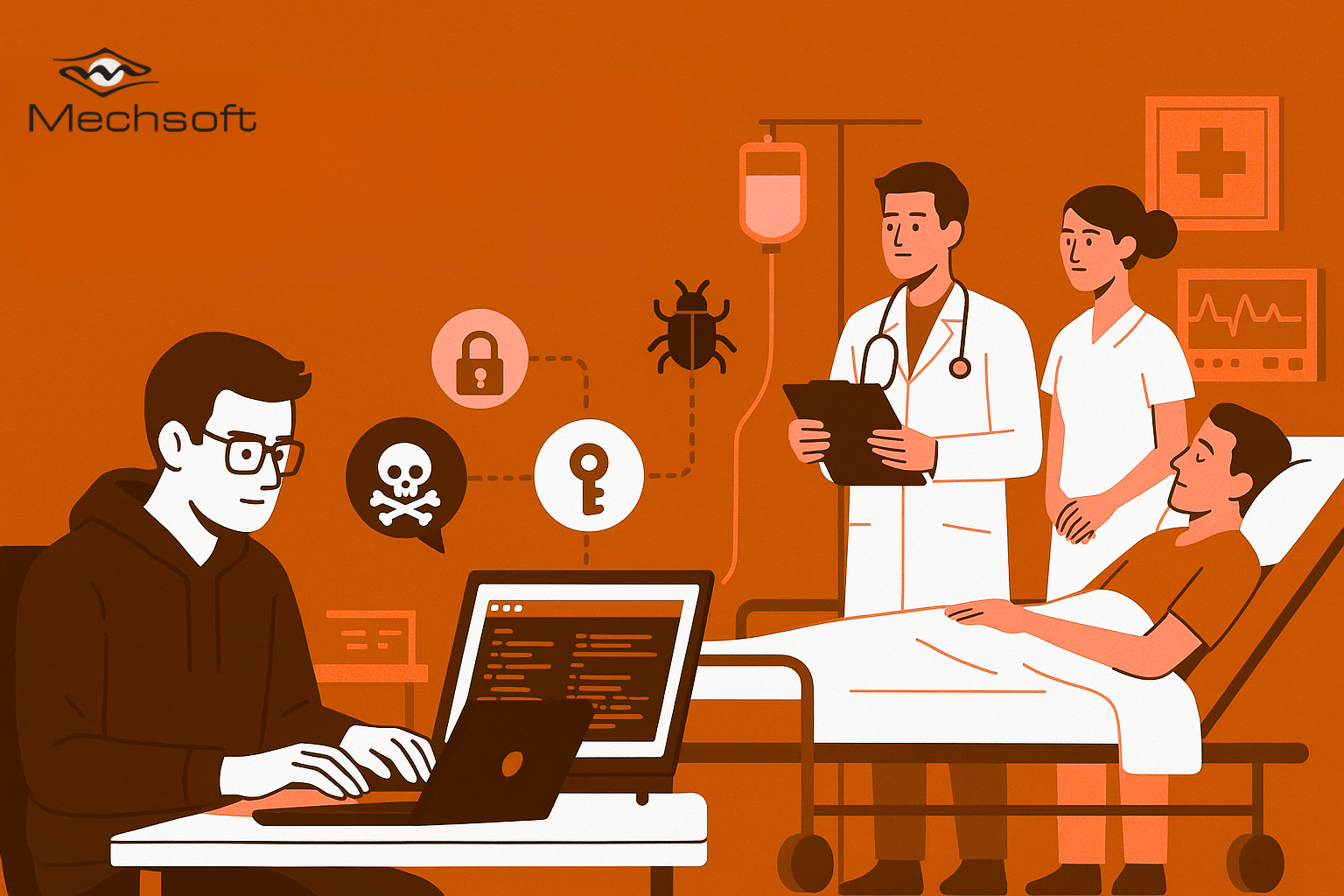Table of Contents
In today’s interconnected world, mobile applications have become an integral part of commercial ecosystems. From social networking to online banking, these apps handle sensitive user information, making them prime targets for cybercriminals.
To ensure the security and integrity of mobile applications, it is crucial to conduct a thorough VAPT. This article provides a comprehensive guide to Mobile Application VAPT, shedding light on its importance, benefits, and the procedures involved.
VAPT stands for Vulnerability Assessment and Penetration Testing, a systematic approach to evaluating the security of mobile applications. It involves identifying vulnerabilities, assessing their potential impact, and simulating real-world attacks to gauge the effectiveness of existing security measures.
The goal of VAPT is to proactively uncover weaknesses before they can be exploited by malicious actors. Here are the two divisions of the VAPT process:
Vulnerability Assessment
The first step in VAPT is conducting a vulnerability assessment (VA). VA involves scanning computing networks for security loopholes, misconfigurations, and weak points. The assessment may include static analysis of network codes, dynamic analysis by subjecting networks to different environments, and manual code review. By identifying vulnerabilities early on, developers can fix them before letting network users in.
Penetration Testing
After the vulnerability assessment, the next stage is penetration testing (PT). PT involves simulating real-world attacks to exploit the identified vulnerabilities. Skilled ethical hackers, known as penetration testers or “pen testers,” attempt to gain unauthorized access to IT ecosystems, extract sensitive data, or disrupt their functionality.
PT provides valuable insights into the effectiveness of network security controls and helps strengthen defenses.
VAPT for Mobile Applications
Mobile applications are attractive targets for cybercriminals due to their widespread usage and the valuable data they process. According to recent reports, mobile malware attacks increased by 54% in the past year, with over 130,000 new malicious apps detected monthly.
These attacks encompass a wide range of threats, including data breaches, identity theft, financial fraud, unauthorized access to personal information, and more.
Applicability of VAPT in Mobile Applications
Given the rising threats to mobile applications, VAPT has become essential for ensuring cybersecurity. Through comprehensive testing, VAPT identifies vulnerabilities and helps organizations understand the potential risks associated with their mobile apps.
VAPT lets businesses take proactive measures to safeguard user data, protect their brand reputation, and comply with regulatory requirements. Here are a few benefits of VAPT in Mobile Applications.
Data Protection, Safety, and Recovery
VAPT helps identify and address vulnerabilities that could lead to data breaches. By conducting thorough testing, organizations can strengthen cybersecurity postures and ensure the confidentiality, integrity, and availability of user data.
In the event of a security incident, VAPT aids in recovery by enabling swift detection, response, and remediation. Moreover, VAPT can help find potential loose ends that can lead to accidental data evaporation, so that businesses can place measures for prevention.
Prevention of Unauthorized Access
Unauthorized access is a significant concern for mobile applications, especially for financial and documentation apps. VAPT helps identify weak authentication mechanisms, insecure data storage, or insufficient access controls that could allow fringe elements to gain unauthorized access. By addressing these vulnerabilities, organizations can prevent unauthorized access to sensitive information.
Prevention of Financial Losses
Mobile app vulnerabilities can lead to financial losses through fraudulent activities, such as unauthorized transactions or stolen banking credentials. VAPT assists in uncovering security flaws, like weak passwords and unprotected pathways, that could be exploited by cybercriminals for financial gain. By mitigating these risks, organizations can protect their customers and prevent monetary losses.
Procedure of Mobile Application VAPT

1. Defining Scope of Testing
Before starting VAPT, it is crucial to define the scope of testing. This includes determining the target mobile application, identifying the testing objectives, and establishing the rules of engagement.
2. Selecting Mobile Devices for Testing
Since mobile applications can run on various platforms and devices, it is essential to select a representative sample of devices and operating systems for testing. This ensures that the app’s security is evaluated comprehensively across different platforms and hardware configurations.
3. Gathering Relevant Information
To conduct effective VAPT, gathering relevant information about the mobile application is essential. This includes understanding the app’s architecture, functionalities, user base, and potential risks. Such information serves as a foundation for designing testing plans and scenarios.
4. Designing Testing Plans and Pathways
Based on the gathered information, the VAPT team designs testing plans and pathways. This involves creating test cases, scenarios, and attack vectors to simulate real-world attack scenarios. The goal is to cover various attack surfaces and identify potential vulnerabilities.
5. Running Designed Testing Scripts
With the testing plans in place, the VAPT team executes the designed testing scripts. They perform a range of tests, including vulnerability scanning, code review, network sniffing, and orchestrated attack simulations. The process helps identify vulnerabilities and exploitable elements within the mobile app architecture.
6. Consistent Analysis and Reporting
Consistent analysis during the testing process is crucial for successfully achieving testing objectives. Analyzing the findings and generating comprehensive reports helps study the identified vulnerabilities and their severity, and recommend remediation measures. Clear and actionable reports enable developers and stakeholders to understand the security gaps and take appropriate steps to address them.
7. Determining Solutions and Repeating the Process
Based on the analysis and reports, the development team determines appropriate solutions to mitigate the identified vulnerabilities. Once the necessary fixes are implemented, the VAPT testing process should be repeated periodically to ensure consistent cybersecurity vigilance and address any new vulnerabilities that may arise.
Mechsoft is the Perfect Mobile Application VAPT Testing Partner
Mobile applications have become indispensable in our digital lives, but they also present significant security challenges. To ensure the confidentiality, integrity, and availability of user data, organizations must embrace VAPT as an integral part of their mobile app development lifecycle.
Mechsoft Technologies offers the best-in-class cybersecurity services for mobile applications. We offer mobile application VAPT testing tools that provide a solid defense against cyber threats, helping organizations safeguard their users and their brand reputation in an increasingly interconnected world. Get in touch with our experts today to build a secure tomorrow for your mobile app.
Also Read: Why Automated Penetration Testing & Red Teaming Is A Reliable Testing?



